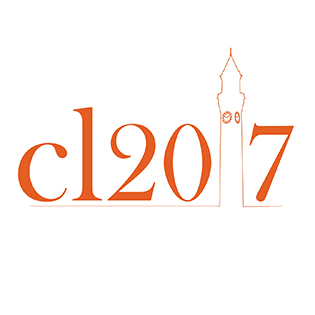Styling: big and small data in Corpus Stylistics
 Workshop convenors
Workshop convenors
Workshop programme
- Programme, updated 5 July 2017 [PDF, 46 KB]
- Monday, 24 July, 9.00-4.45
Workshop summary
The workshop Styling: Big and Small Data aims to further contribute to the growing area of ‘corpus stylistics’. Corpus stylistics is grounded in corpus linguistic methods that are applied to the linguistic study of literary texts in order to – if possible – measure and describe (quantitatively and qualitatively) meaningful stylistic patterns and to chart the effect these have on readers. It seems difficult to pinpoint what makes a text ‘literary’ or ‘fictitious’, and in stylistics, a cline of literariness has been suggested which allows us to understand the term “literary” in its broadest sense (Carter 1999) and as a category to be explored in its own right. The field of stylistics itself is equally heterogeneous. Leech (2008: 1 - 2) even suggests the term ‘interdiscipline’, i.e. seeing stylistics as a bridge between linguistic and literary studies and analyses.
Literary (and other) texts can be studied as individual texts, collections of texts, as texts on a discourse level and more frequently, with the development of digital humanities well under way, as very large collections of texts in order to chart patterned behaviour of stylistic features. We may study literary texts from various perspectives taking into account e.g. variables of time and space. The time perspective allows us to study the texts synchronically or diachronically (Busse 2010); the space perspective invites us to take a cross-linguistically comparative perspective and consider the role of literary translation (Čermáková 2015).
In his PALA-2003 keynote speech, Sinclair drew our attention to a challenge of (corpus) stylistic investigation that is still very much prevalent: there is “no theory to explain how the patterns relate to meaning, no guarantee that the same patterns in another text will create the same effects, no detailed, comprehensive descriptive apparatus that is flexible enough to accommodate the extremely varied language of literature” (Sinclair 2016: 180). Furthermore, he stressed that stylistic description rests on sensitive interpretation and is essentially ad hoc and until recently small-scale. With the development of corpus methodology this is not necessarily the case anymore as recent studies have shown (e.g. Busse 2010, Mahlberg 2013). The increasing complexity that the field of digital humanities is now offering in terms of available data opens up new research possibilities, which require innovative methodological approaches. Quantitative and qualitative methods need to be in balance: the researcher needs to have tools that allow him to comfortably move between the quantitative and qualitative analyses and these should inform and support each other.
Stylistic, linguistic, or corpus stylistic analysis is not an isolated theoretical endeavour of a few specialists, it is a discipline, that, as other disciplines within the broad field of humanities, needs to develop a set of tools that will help us to cope with the challenges of the modern world, of which one characteristic is an endless flow of massive linguistic and other kinds of information from various sources and genres, both traditional and new. This seemingly shapeless mass of text is in urgent need of interpretation that consequently needs comprehensible analytical approaches.
Call for papers
We invite proposals for 30-minute papers addressing various research and methodological questions currently being explored in corpus stylistics from a variety of angles. It also welcomes any new approaches, going beyond the state-of-the-art. The topics may focus on (but are not limited to) the following:
- how are literary effects created linguistically?, can these be measured quantitatively and qualitatively?
- what are the stylistic differences between genres/authors/periods?
- how can corpus stylistics contribute to characterisation in (literary) texts?
- literary translation and cross-linguistically comparative analysis
- cognitive approaches and the reading experience
- ideology and manipulation in text
The workshop will also welcome any corpus software presentations that are designed to support empirical analysis of literary texts.
We invite abstracts for 20-minute presentations to be followed by 10 minutes of discussion. Abstracts should contain the following elements:
- A clear indication of your aims and research questions
- An explanation of your methodology and analytical framework
- An indication of your emerging results and conclusions
Abstracts should not exceed 400 words (excluding references) and should be sent as email attachments directly to the workshop convenors, titled ‘CL 2017Surname’. Please ensure that you also include your name, academic affiliation, and email address.
The deadline for abstract submission is end of May 2017.
References
Busse, B. (2010). Recent trends in New Historical Stylistics. In D. McIntyre & B. Busse (Eds), Language and Style, 32 - 54. London: Palgrave.
Carter, R. (1999). Common language: corpus, creativity and cognition. Language and Literature 8 (3), 195 - 216.
Carter, R. (2016). Introduction. John Sinclair: Papers on Stylistics. In S. Zyngier (ed.), Language, Discourse, Style. Selected works of John McH. Sinclair. Amsterdam: John Benjamins.
Čermáková, A. (2015). Repetition in John Irving's novel A Widow for One Year: A corpus stylistic approach to literary translation. International Journal of Corpus Linguistics, 20 (3), 355 - 377.
Leech, G. (2008). Language in Literature. Style and Foregrounding. Harlow: Longman.
Mahlberg, M. (2013). Corpus stylistics and Dickens’s fiction. London: Routledge.
Sinclair, J. (2016). Language, Discourse, Style. Ed. by S. Zyngier. Amsterdam: John Benjamins.